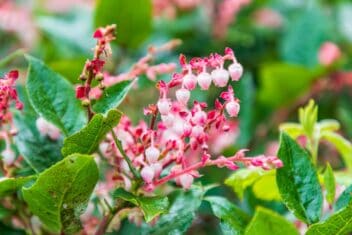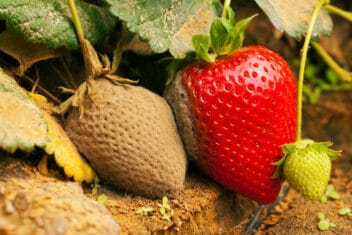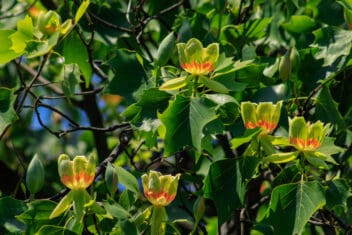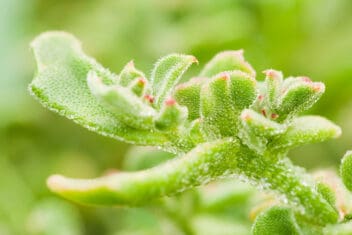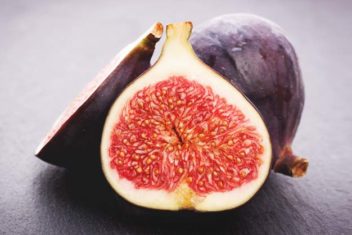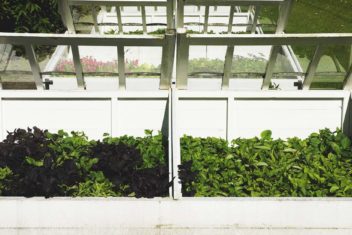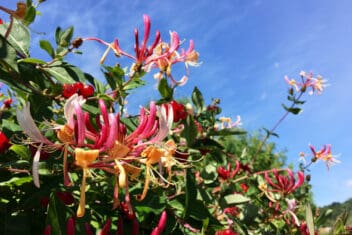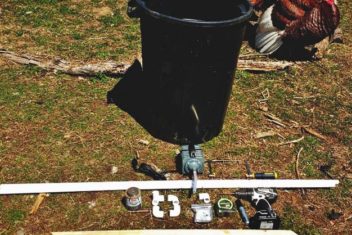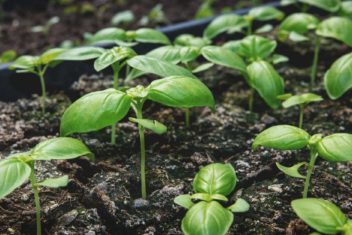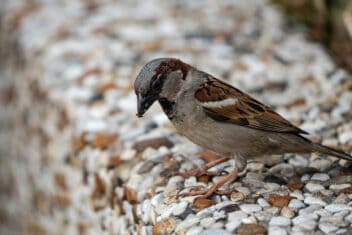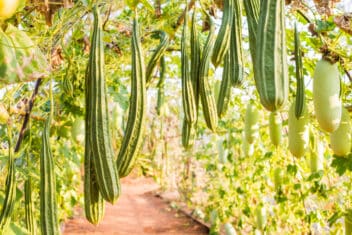Flowering bushes are one of my favorite things about my garden because they add beauty to an area without needing too much maintenance. Aside from some occasional pruning throughout the year, flowering bushes are perfect for those who want low-maintenance landscaping with a lot of impact.
My property has a variety of flowering bushes. Azaleas span the length of the front of my home, blooming every spring in a burst of purple, hot pink, and white. Lilacs grow on the sides of my driveway, and I always accidentally hit the branches when I back up, much to the excitement of my kids. Rose of Sharon bushes line the property between our yard and our neighbors, creating a natural and defined boundary. The result is a riot of color that lasts all year long.
If you like the idea of adding flowering bushes to your property, here are a few of my favorite options that you should consider.
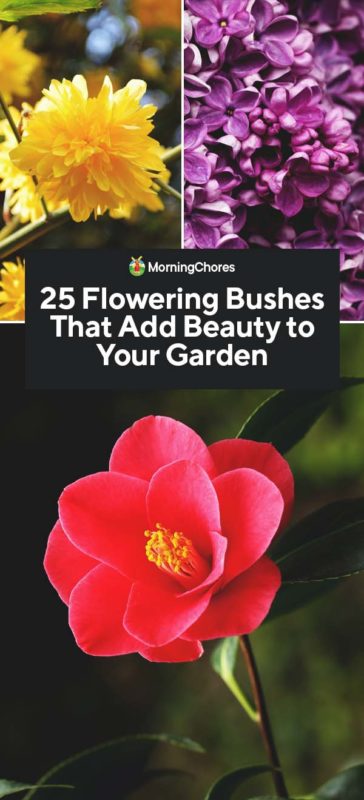
1. Rose of Sharon (Hibiscus syriacus)
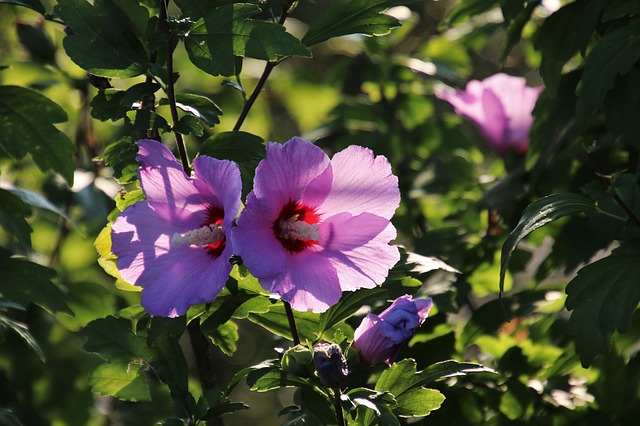
Rose of Sharon bushes produces in a variety of colors, including white, red, lavender, or light blue. They bloom in the late summer, and despite the name, they aren’t roses. Instead, they’re a member of the mallow family, more closely related to the hibiscus plants.
These bushes are large and can reach up to 10 feet tall and 6 feet wide. If that’s too large, you can find a shorter cultivar that only reaches 5-8 feet. You can grow Rose of Sharon bushes in USDA hardiness zones 5-9.
NOTE: Rose of Sharon are poisonous to dogs. Our family learned this the hard way when our puppy ate some branches and ended up puking. So, keep your dogs away!
2. Lilac (Syringa vulgaris)
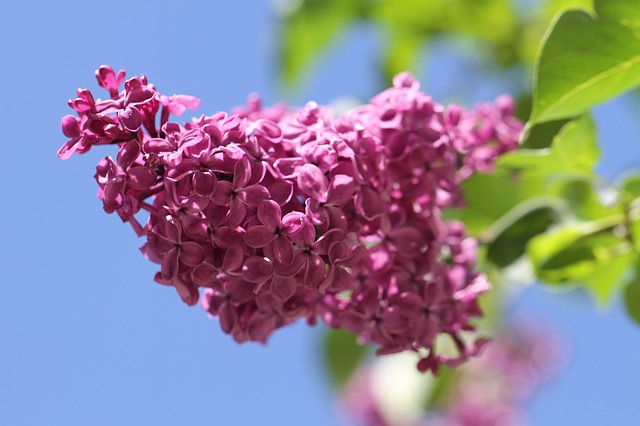
Lilacs are a sign that summer is on the way. Common lilacs are beautiful to look at, and they also happen to be one of the most fragrant flowers around. It seems like nearly every garden in the northern part of the United States has at least one lilac bush.
Lilac bushes grow in USDA hardiness zones 3-7, reaching 5-15 feet tall, depending on the variety. Some spread to 6-12 feet wide. Most of these bushes produce flowers that are lavender or purple, but other cultivars are white or red. Some varieties bloom in late summer or early fall.
Perhaps best of all, lilacs are a hardy bush that tolerates almost any condition. They might need some periodic pruning, though, or they could overwhelm a small yard.
3. Andromeda (Pieris japonica)
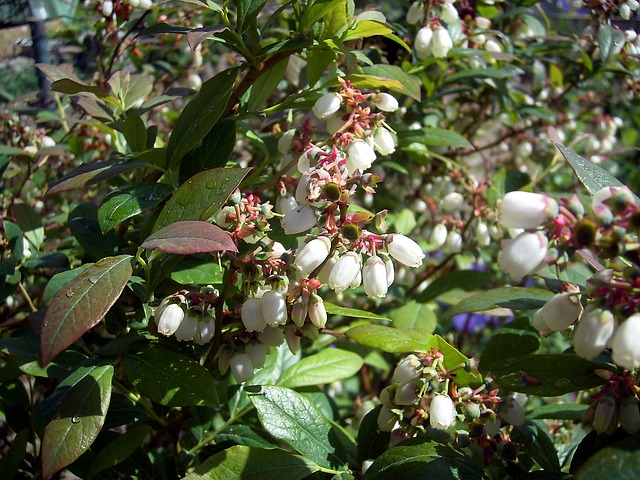
Andromeda bushes are perhaps one of the most fragrant, with a lovely white display of bell-shaped blossoms every spring. Andromedas are also one of the earliest flowering bushes and they’re a welcome sight after a long winter.
Andromeda bushes are native to Asia, specifically China and Japan. They grow well in the zones 5-7. These bushes can reach 8 feet in height, so make sure you pick the right location. Andromeda needs partial shade with moist, well-draining, acidic soil.
4. Azalea (Rhododendron)
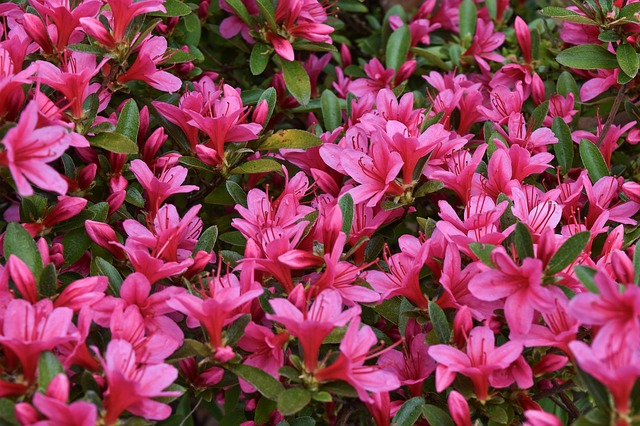
Azaleas are a colorful shrub that belongs to the same genus as rhododendrons. They bloom in the early spring, showing you that warmer times are on the way. These first spring flowers love woodland environments and need acidic soil to thrive. In residential areas, azaleas work as foundation plantings.
One disadvantage of azalea bushes is that they aren’t evergreen, so they don’t add any winter interest. The blooms last a short period and then fall away. But the burst of color you get for a few weeks in the spring makes them worth it.
Azalea bushes grow 4-8 feet tall with a similar width, depending on the variety, and they grow in USDA hardiness zones 4-9. There are thousands of azalea bushes in 35 different types so you can pick one that you enjoy the most.
5. Forsythia (Forsythia)
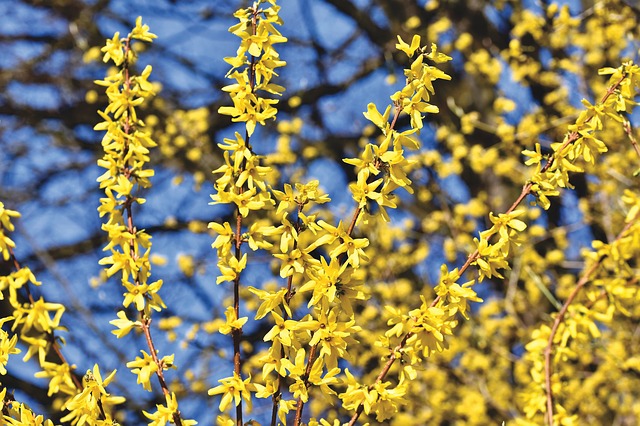
Another favorite of the flowering bushes for residential homeowners is forsythia. These are some of the first plants to burst into color in the spring, showcasing yellow blossoms before the bush even creates leaves.
Forsythia grows well in USDA zones 4-8, and, depending on the cultivar selected, can reach ten feet tall. Some varieties only grow 1-2 feet tall. The spiny design of these bushes makes it perfect for fences or boundary hedges. Forsythia was one of the first landscaping plants brought over from China to Europe.
6. Bluebeard (Caryopteris x clandonensis)
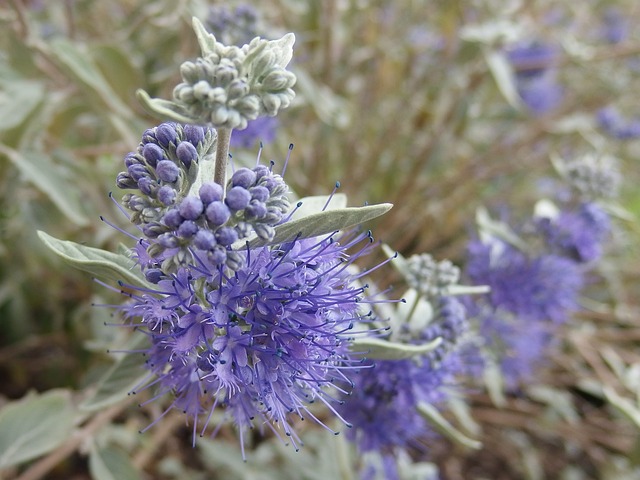
Also known as blue spirea, bluebeard bushes are deciduous perennials that bloom in the late summer. The unique blue flowers make the plant look like it’s covered in a purple mist that attracts butterflies as well as bees.
At maturity, bluebeard bushes reach 3-4 feet with a larger width. They grow in USDA hardiness zones 5-9, but those living in the northern part of the country will notice that these bushes die back to ground level during the cold. Buds will form on the new wood, and they need to be pruned in late winter or early spring.
Put bluebeard shrubs in full sun and ensure the soil is well-draining. One thing that homeowners love about these bushes is that they’re drought-tolerant.
Note: Be careful with these bushes if you have children because they can be poisonous. Put them away from swimming pools, patios, or a child’s play area.
7. Rhododendron (Rhododendron)
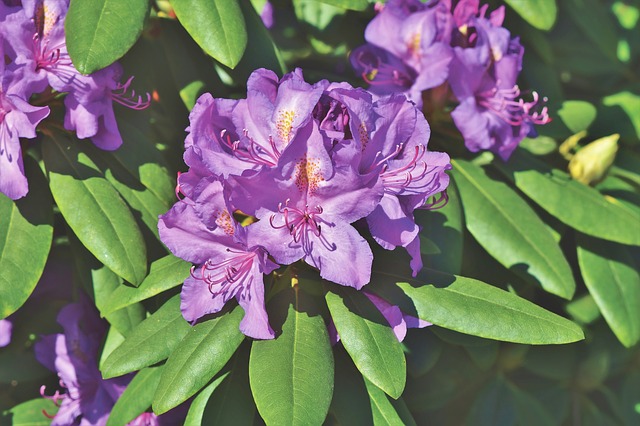
Almost everyone knows about rhododendrons, even if you think you don’t. These bushes that seem to be everywhere. Often called rhodies, these flowering bushes are one of the most popular selections for those who want something easy to maintain.
Rhododendrons are part of the heath family and come in a variety of colors. You can find these bushes in lavender, white, pink, and lavender-pink, as well as other less-common colors. Most of the varieties originated in China, but some are native to the United States.
8. Vanhoutte Spirea (Spiraea x vanhouttei)
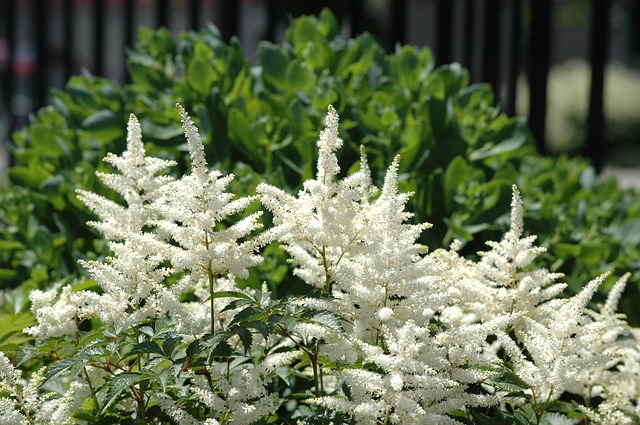
This favorite flowering bush isn’t as common as it used to be years ago, but I think it should be. Vanhoutte spirea is related to the rose. It’s a thorny shrub with white flowers that pop up throughout April and May. They’re hardy in zones 3-8 and reach a height of 5-8 feet with a spread of 7-10 feet wide.
These bushes, due to the large size, work well for hedges, foundation planting, and borders. Spireas come in different colors, such as white or pink, and some have colored foliage. For example, ‘Gold Mound’ spirea has gold leaves.
9. Weigela (Weigela)
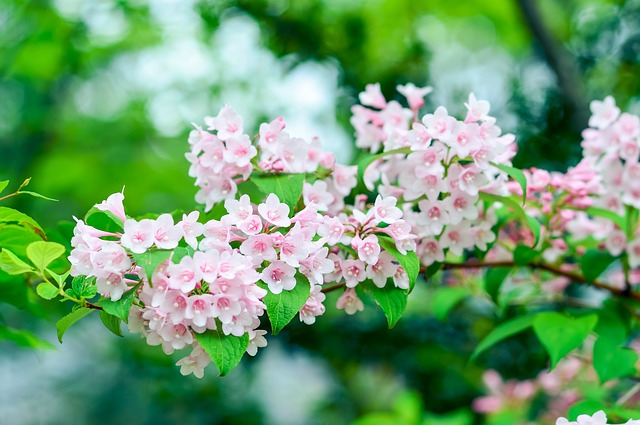
Weigela grows well in USDA hardiness zones 3-9. It’s a beautiful shrub that flowers in the early spring and sporadically during the summer. Thanks to its compact size, it works well on borders and in flower beds. You can select more compact shrubs, such as the variety called ‘Fine Wine’ that produces pink flowers and burgundy fall foliage.
These bushes are related to honeysuckle, growing trumpet-shaped flowers in pink, red, and white. Some of these varieties are cold tolerant, while others do better in warmer areas.
10. Flowering Quince (Chaenomeles)
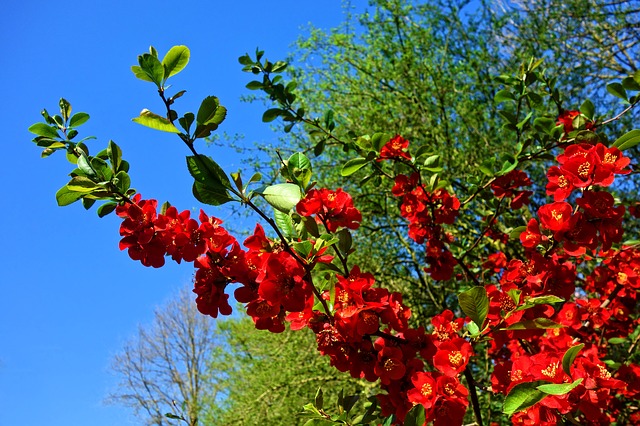
If you want a bush that blooms in April, flowering quince is a great pick. It’s an easy to recognize plant with pink, red, or orange flowers. If you live in zones 5-8, you can put these beautiful shrubs throughout your property.
Flowering quince reach about 4 feet tall and 4 feet wide, and their compact size makes them a favorite for residential landscapes. Once the flowers drop away, you get small, hard berries that can be used to make jams.
11. Viburnum (Viburnum)
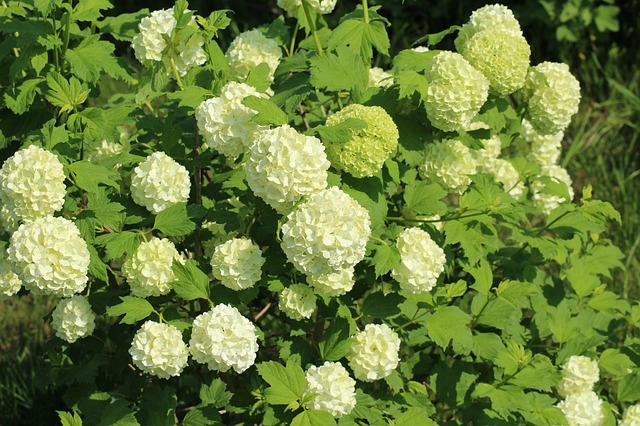
Many landscape designers tell you that viburnum is one of their favorite flowering bushes because the species do well in wet or drought-prone soils, and they tolerate full sun or shade. Viburnum bushes flower from the spring to summer and the berries attract birds to your garden.
Viburnum berries are also a pretty decorative element in the fall. They don’t reseed or invade the landscape as other berry bushes tend to do. Classic viburnum bushes are rangy with loose flower clusters, but the newer, imported shrubs have a denser growth of snowball clusters.
12. Desert Willow (Chilopsis linearis)
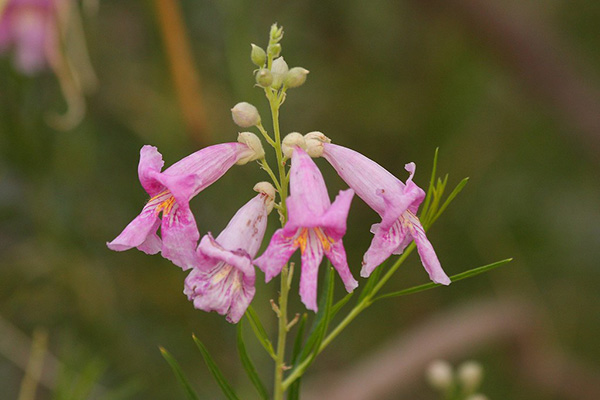
Desert willows are easy-to-grow shrubs in Southwestern deserts and semidesert parts of Southern California. These bushes have thin, drooping leaves like a willow tree and 2-inch pink and white flowers that look like catalpa blossoms, which is unsurprising since they are part of the catalpa family. The bush flowers from April to September.
They can get up to 40 feet tall, or stay as small as 15 feet, so make sure you have the room for one of these pretty plsants. They grow well in zones 7-9 and are extremely drought tolerant.
13. Salvia (Salvia)
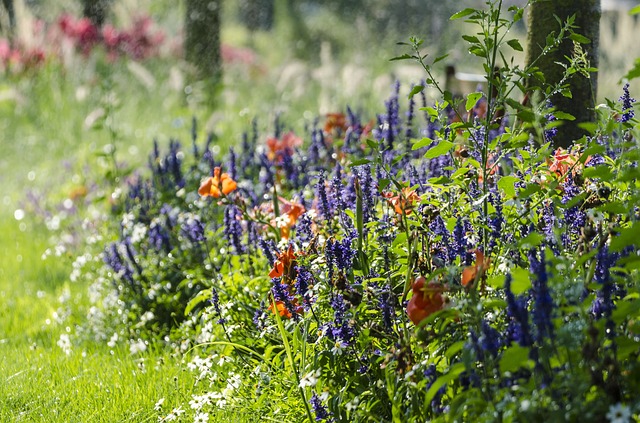
Another pick for the Southwestern states is Salvia. It’s a favorite in the coastal parts of California, but they also do well in Texas, Arizona, and New Mexico. They offer a lovely fragrance, and all of the varieties are drought-tolerant.
There’s a massive variety of salvias, including many that are edible, so they do double-duty in the garden. Most salvias are hardy in zones 8-10. Types include Mexican sage, autumn sage, scarlet sage, and Black and Blue sage.
14. Summersweet (Clethra alnifolia)
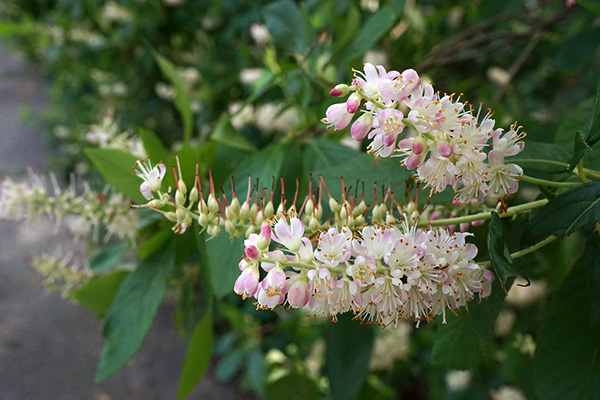
Summersweet is a rare flowering shrub that blooms in shady places. These flowers offer a sweet and spicy fragrance that is loved by butterflies and bees, so be sure to place them away from children’s play areas.
Summersweet grows well in USDA hardiness zones 3-9, reaching 3-8 feet tall and 3-6 feet wide. This bush blooms through late July and August, creating white flower spikes in abundance for 4-6 weeks. The flowers are either in white or pink, set off by dark green leaves that turn yellow and golden in the fall time. Certain species, such as ‘Ruby Spice’ or ‘Pink Spires’ make pink buds.
Make sure to plant these slow-growing bush that in a shady location, such as near a patio or pathway where you can catch the aroma. These bushes grow in medium to wet soils; make sure the ground isn’t allowed to dry out. Prune in the late winter.
15. Buttonbush (Cephalanthus occidentalis)
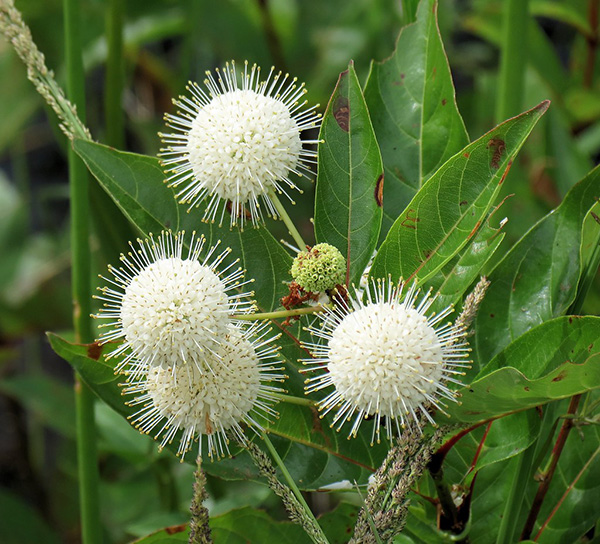
Buttonbush is a native plant that grows 6-12 feet tall. The glossy dark leaves are lovely, and the globular flower clusters that appear in June are a unique addition to the garden. Buttonbush can handle wet soils and grows in zones 5-9.
Buttonbush attracts butterflies, and ducks and geese eat the seeds of the plant. It grows in part to full shade, giving you a showy display even in shady corners of your garden.
16. Sweetshrub (Calycanthus floridus)
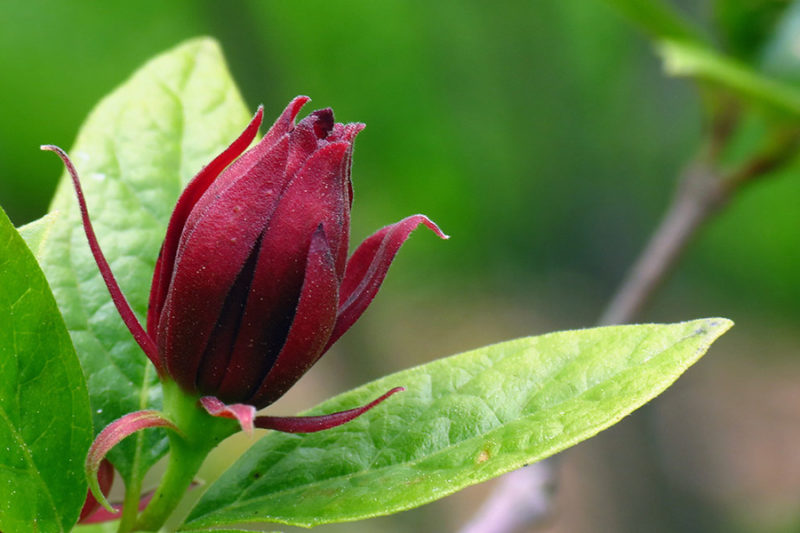
This fragrant shrub’s maroon flowers smell like a mix of pineapple, strawberry, and banana. The plant blossoms from May to July with distinctive 2-inch blossoms. It grows in zones 4-9 in full or part sun.
17. Abelia (Abelia)
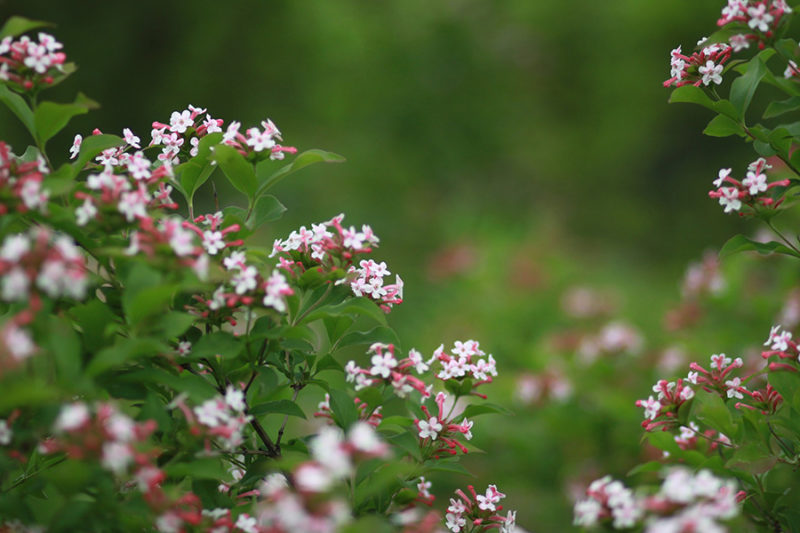
Abelia has pretty pink or white funnel-shaped flowers that are positively catnip to bees. They bloom during the summer and autumn, and you’ll hear the regular buzzing of the bees as they visit your plants. The small, glossy leaves look good even when the plant isn’t blooming. Plants get 6-8 feet tall and 12-18 inches wide. They’re hardy in zones 6-9.
18. Butterfly Bush (Buddleja)
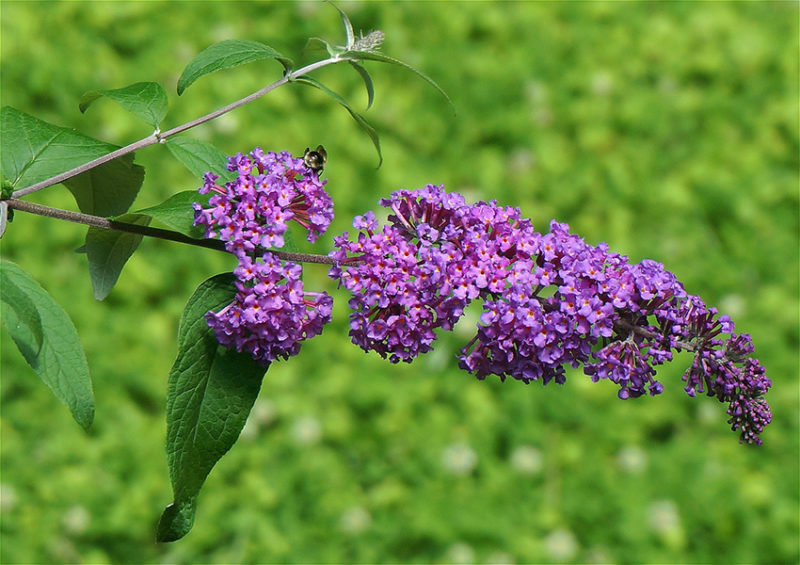
This fast-growing bush has impressive spiked flowers that stick around from summer to autumn. Also known as summer lilacs, the blossoms range from white or yellow to dark purple. As the name implies, butterflies love to feed on this plant.
It’s hardy in zones 5-10 and prefers full sun. Be aware that this plant is considered invasive in some areas.
19. Camellia (Camellia)
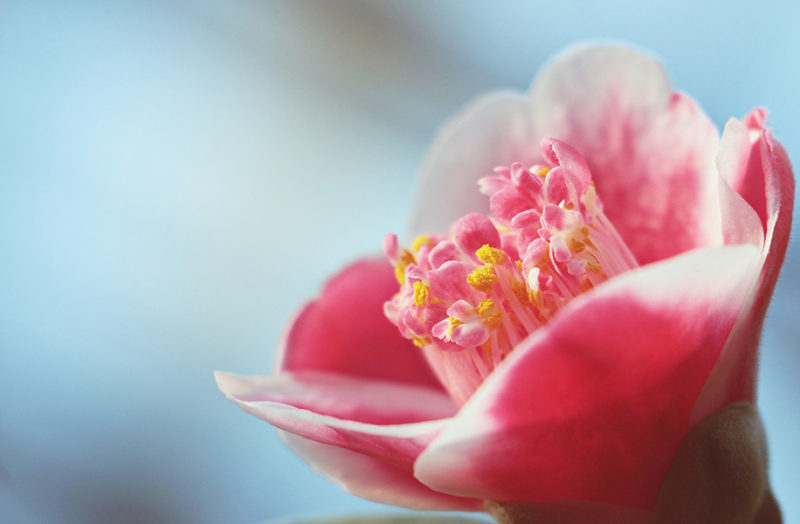
Camellias are almost as pretty when they aren’t blooming as when they are. They have dense, glossy green leaves and showy flowers that pop up when the weather is cooler.
Camellias are Alabama’s state flower, and you’ll find them all over the South They’re hardy in zones 6-10 and prefer protection from the afternoon sun.
20. Ninebark (Physocarpus)
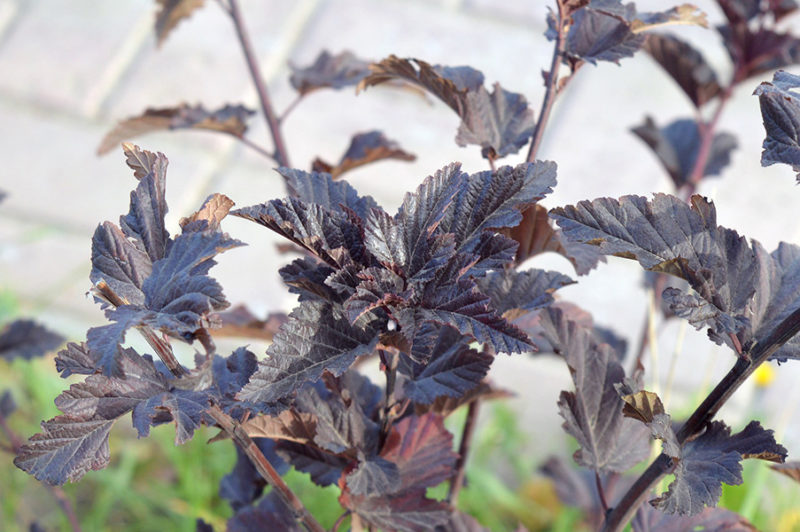
Ninebark is native to the U.S., so it’s a good option if you’re looking for something that is disease-resistant and fuss-free. It grows 3-10 feet tall with round, delicate flowers that can be completely white or white on the edge of the petals with a red center, pink, or red.
Ninebark, so named because of the nine layers of bark that you can peel off of the plant, grows in zones 2-7 and there are varieties that grow well in nearly every part of the U.S. It blooms best in full sun, but it can handle part shade. It’s drought hardy but doesn’t mind moist areas, either.
21. Beautyberry (Callicarpa)
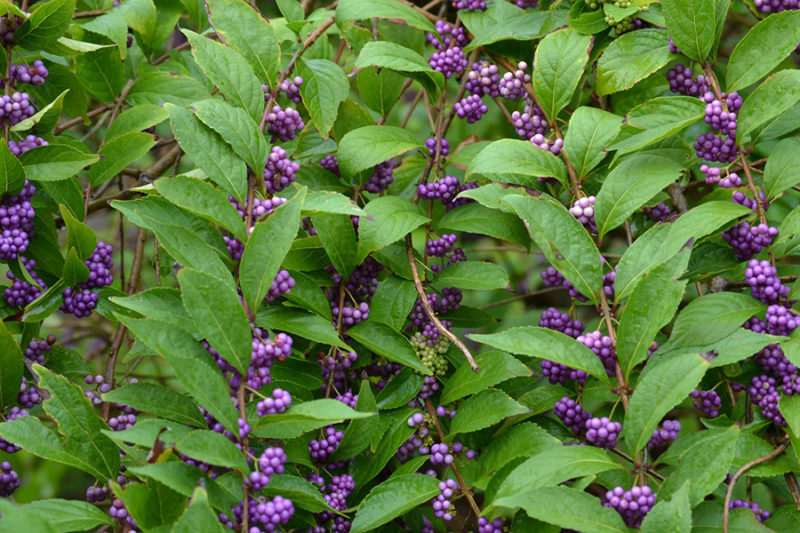
Beautyberry is native to the U.S. with long, arching branches and leaves that gradually turn yellow in the fall. What makes this plant stand out are the clusters of delicate purple (or white) flowers in the spring, followed by vibrant berries in the fall and winter.
You can eat the berries from this bush, and keep in mind that deer and birds love beautyberry, too. This plant grows in zones 5-8 and likes full sun or part shade.
22. Pearl Bush (Exochorda)
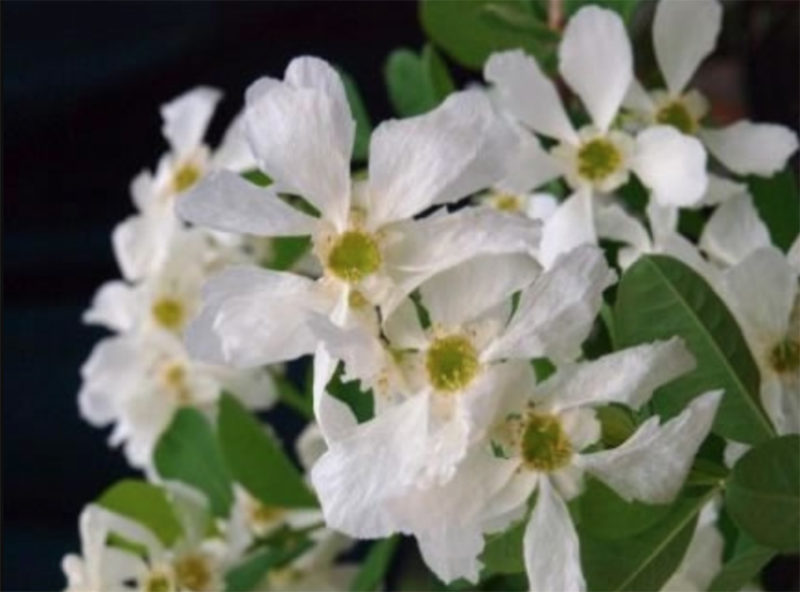
If you want a gorgeous display of flowers in the springtime, consider a pearl bush. It bursts forth with a dramatic display of pearl-like white flowers. It used to be an extremely popular plant, but you don’t see it as much anymore, which is a shame, because it’s easy to grow and is stunning when it’s blooming.
In the winter, the bark peels back, sort of like a birch, adding winter interest to your garden. Pearl bush grows in zones 4-8 in full to part sun. It gets about 4 feet tall and wide.
23. Hydrangea (Hydrangea)
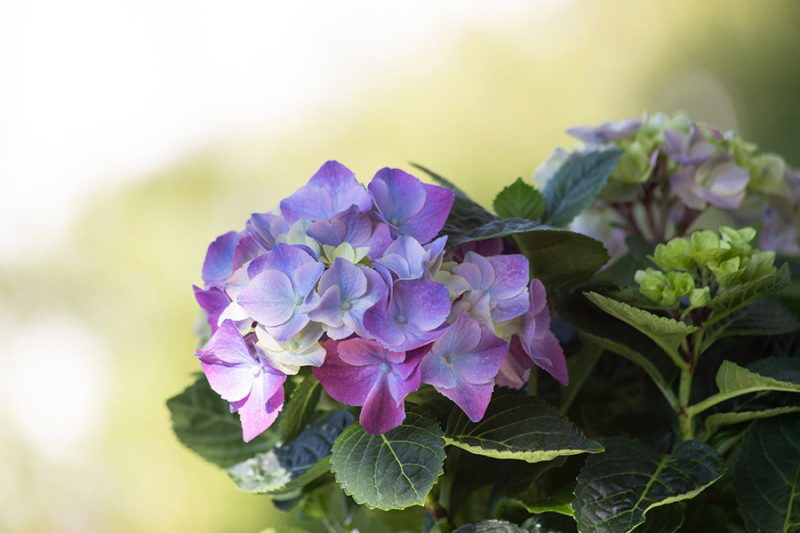
Hydrangeas come in a mind-blowing range of shapes, sizes, and colors. There are over 70 varieties, ranging from climbers to dwarf types, and there are even four kinds that are native to the U.S. They’re one of the most common flowering bushes out there, and for a good reason: they’re gorgeous.
Hydrangeas grow in zones 3-7, and can range from a foot tall to over 15 feet in height. Depending on the type and your particular area, they prefer full sun, or part sun with some protection in the afternoon. Some even handle full shade.
24. Roses (Rosa)
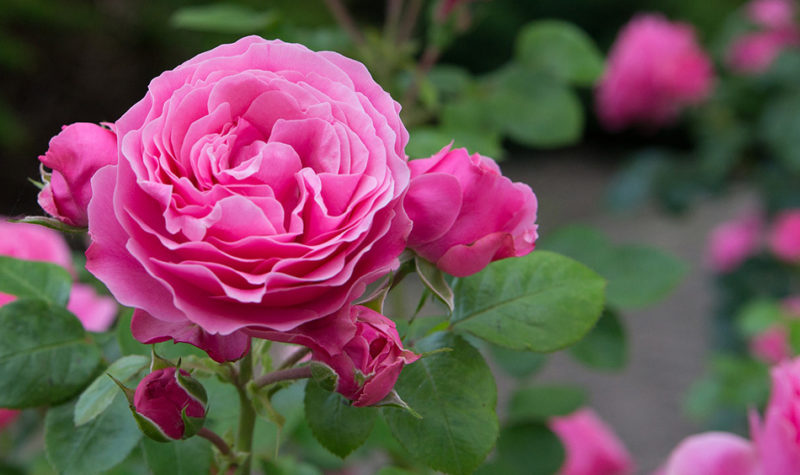
Roses have a reputation as a demanding plant, but they’re less difficult to grow than you might think, and you’ll be hard-pressed to find flowering bushes that give you more varieties of colors and sizes to choose from. You can find roses that bloom from spring to fall in colors ranging from deep red to white and everything in between.
Roses need full sun to perform their best – at least 6 hours per day. You can find roses that will survive anywhere from zones 3-10. No matter what size of plant you’re looking for, you’ll find a rose that will fit.
25. Japanese Kerria (Kerria japonica)
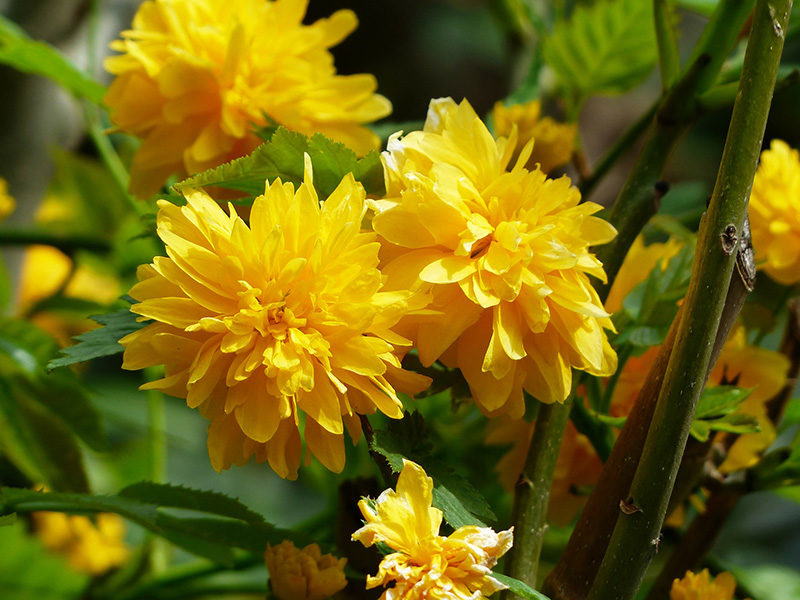
Japanese kerria grows 4-6 feet high and is covered in bright yellow flowers throughout the spring. It’s part of the rose family and grows in part to full shade in zones 4-9. It’s one of the lesser-known flowering bushes, but it’s worth seeking out not only for its showy spring display, but because it adds visual interest to the garden all year round.
Picking Flowering Bushes
Flowering bushes add color and structure in your landscaping. Gardeners can use these bushes as groundcovers, hedgerows, or a focal point in the garden. Place ornamental shrubs and bushes throughout the landscaping, adding the aroma throughout your backyard. With all the great options out there, you’re sure to find the perfect addition for your needs.


